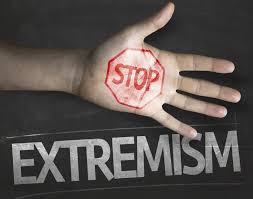Attacks

According to the Prosecutor General's Office of the Russian Federation, the number of registered violent hate crimes in the Russian Federation declined in 2015 from 134 (2014) to 115. Of these, 97 attacks were recorded by the monitoring.
Non-governmental organisations give a figure of 70 hate-motivated attacks, which is probably due to different evaluation methods: the criteria for hate crimes in both countries may differ. According to NGOs in 2015, 81 people became victims of violent hate crimes, 16 of them were killed and 65 were injured (in 2014, respectively, they recorded 101 attacks, in which 35 people were killed and 146 injured).
Unfortunately, Russian law enforcement does not provide statistics on the categories of hate crimes. However, according to the Autonomous Non-Profit Organization (NGO) “Institute for the Study of National Policy and Interethnic Relations,” during the period under review, 20 attacks were registered against members of sexual minorities, during which three victims were killed (in 2014 - 73), 10 attacks on members of the Jehovah's Witnesses community (in 2014 – 9), 13 crimes related to anti-Semitism, including 2 murders of Jews and 11 acts of vandalism (18 cases in 2014); 2 attacks on anti-fascists by neo-Nazis; 22 attacks related to phobia to Muslims in general or to individual Islamic denominations (in 2014 - 17) - 3 imams were killed and 6 people (4 of them imams) were injured in different regions of the country, 14 acts of Islamophobic vandalism were also committed; 1 case of an attack on an Orthodox priest.
According to ethnic composition of victims, the following statistics emerge in descending order: Dagestanis (2 dead, 4 injured), Kirghiz (2 dead, 1 injured), Jews. (2 dead), Tajiks and Syrians (1 dead, 2 injured), Ukrainians (1 dead), Russians (3 victims), Uzbeks (2 victims), Armenians, Kazakhs, Kalmyks (1 injured). The exact nationality of the 33 victims is unknown. At the same time, a significant number of victims (anti-fascists, LGBT, Jehovah's Witnesses) are persecuted regardless of their nationality.
In terms of geographical locations, Moscow and the Moscow region (4 dead and 25 victims) traditionally “lead” in the number of victims. Closely following Moscow is St. Petersburg and the Leningrad Region (3 dead, 12 injured). In third place, “thanks” to the shelling of tourists in Derbent, should Dagestan (3 dead, 11 injured). It is followed by the Voronezh Region (2 dead), Kursk Region (1 dead, 2 injured), Krasnoyarsk and Stavropol Territories (1 death toll), Rostov Region (4 victims), KhMAO, Khabarovsk Territory, Murmansk and Samara Regions (2 victims each ), Altai and Perm Krai, Chuvashia, Mordovia, Kabardino-Balkaria, KChR, Karelia, Arkhangelsk, Volgograd, Vologda, Nizhny Novgorod, Tver, Yaroslavl regions (1 casualty each).
By the end of 2015, we observed a noticeable reduction in the number of attacks (in 2014 there were 101 of them according to NGOs). The reason for this may be the work of law enforcement agencies, the severe pressure of the authorities on nationalist groups, and the departure of radical nationalists from Russia. For example, in 2014-15 about 3,000 Islamist radicals with Russian passports left to fight in Syria. However, nationalists are maintaining their influence. This is evidenced by the fact that LGBT (3 dead and 17 injured) and Jehovah's Witnesses (10 victims) occupy a notable place among the victims (as in 2014), hostility to whom has been actively introduced over the past few years, including at the official level, as well as through the media. Antifascists have also been subjected to attacks (2 victims).
If we talk about xenophobic attacks, in 2018 the monitoring recorded 6 deaths and 29 victims, in 2019 - 6 deaths and 58 victims, in 2020 (in 11 months) 1 deaths and 25 victims. Despite the fact that every such attack is a tragedy, we can state that the number of attacks is still at a low level compared to the second half of the 2000s, when the number of deaths sometimes exceeded a hundred per year, and the number of victims was in the hundreds.
The two largest cities in the country, Moscow (and the Moscow Region, which is actually a single region) and St. Petersburg (and the Leningrad Region), remain the main centers where such crimes were committed. Thus, in 2018 Moscow accounted for 5 deaths and 15 victims, St. Petersburg for 1 death and 6 victims, in 2019 for 3 deaths and 19 victims and 1 death and 13 victims respectively, and in 2020 for 5 and 11 victims. Another notable trend in recent years is an increase in the number of attacks on LGBT people, likely caused by the perception that the authorities will not be particularly zealous in prosecuting attackers (see below), and, consequently, the proportion of LGBT people among victims of attacks. In 2018, LGBT people included (or were accepted by LGBT people or suffered because they tried to protect them) one death and four victims (approximately 8% of all victims), in 2019 three deaths and 13 victims (i.e., a quarter of all victims), and in 2020 11 victims (i.e., 40% of victims).


